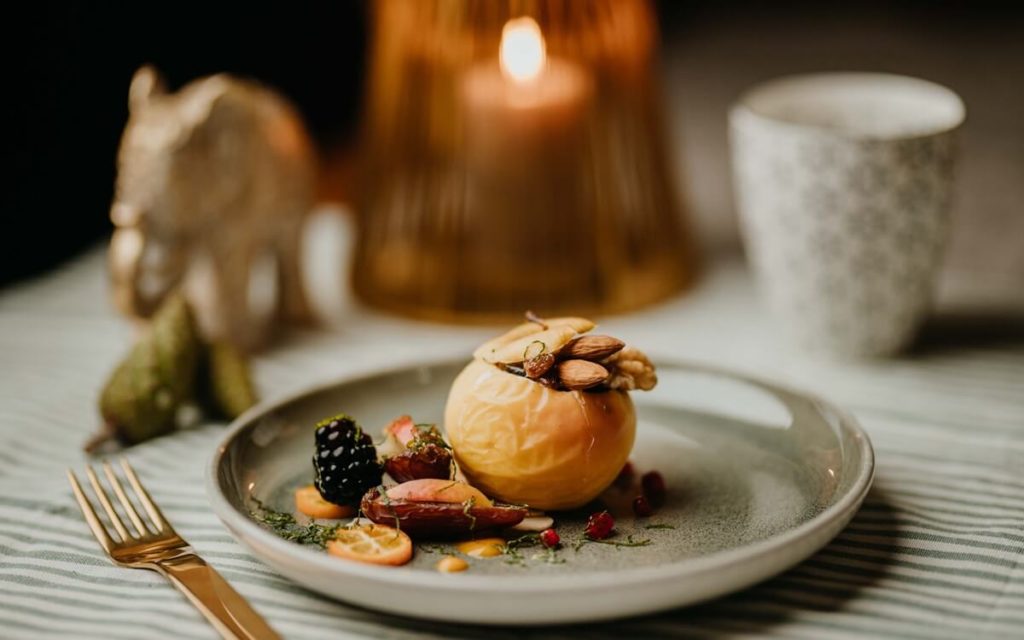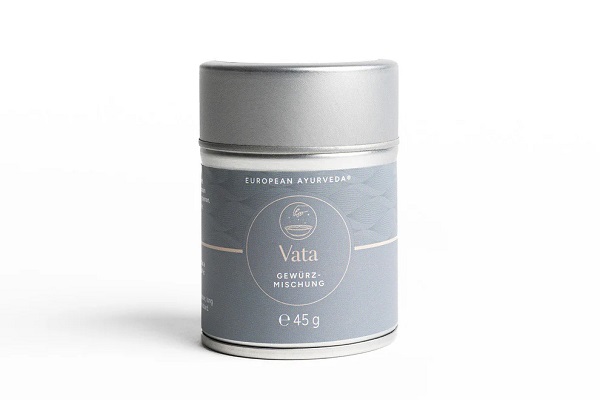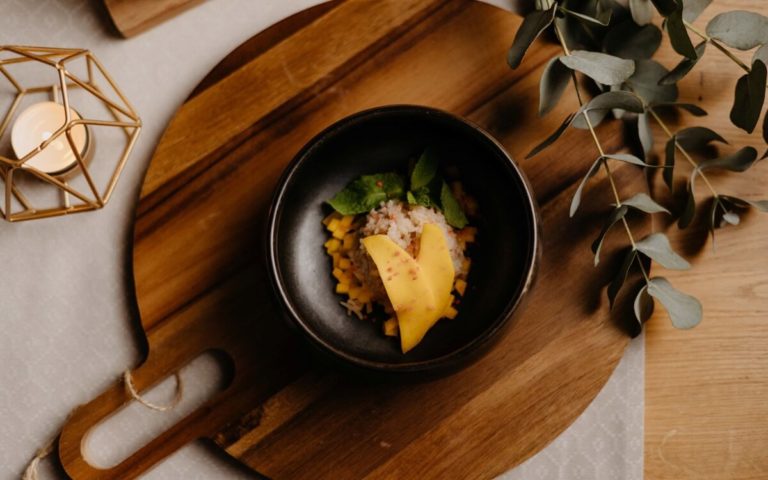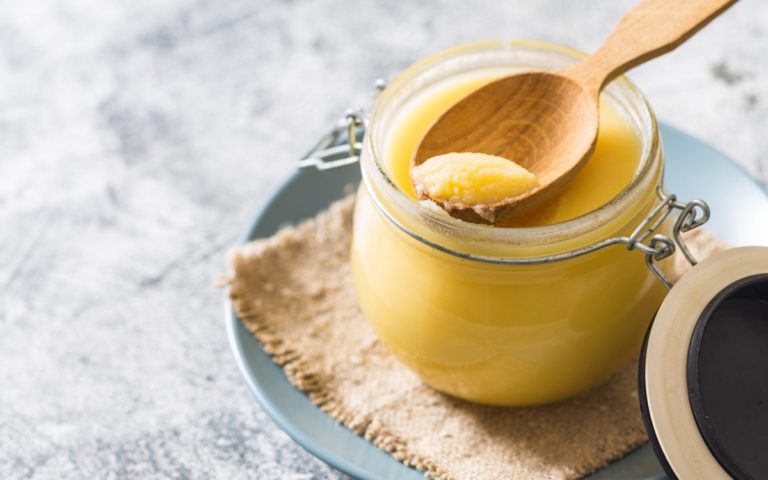In Ayurveda, the three bioenergies determine our character, personality and health. As far as activity and movement are concerned, Vata is highly valued as an Ayurvedic dosha. And yet an elevated Vata is directly linked to stress and anxiety. We explain exactly what defines the Vata type.
The Vata dosha and the importance of constitutional types in European Ayurveda®
Ayurveda generally speaks of three doshas. The word translates roughly as "error potential". It is important to know that everyone carries all three error potentials within them.
Depending on whether Vata, Pitta or Kapha is naturally predominant, this shapes the character, personality and tolerance for this or that circumstance. In European Ayurveda® we also call the three types "bioenergies".
Vata in Ayurveda
Let's take the Vata potential as a brief example. It provides the body with energy and creativity. If you have a lot of it, you tend to be a quick and lively person.
If the level rises, however, it can turn into nervousness and restlessness. If there is too little Vata present, dissatisfaction, hopelessness, lack of courage and listlessness set in.
Vata is of particular importance here. If it becomes imbalanced, and it does so more easily than the other two doshas, "complications" in the form of illnesses are most likely to occur.
What are Vata types like?
- Physical characteristics: slim build, dry skin, cold hands and feet
- Mental characteristics: enthusiastic, creative, curious, communicative, nervous, anxious
Vata type: Appearance and character traits
People who tend to be slim and fragile tend to have a high Vata potential. Sensitive in body and mind, they often have cold and dry hands and feet and are prone to psychosomatic illnesses.
Although the elements associated with it are air and space, the fragile and sensitive body does not necessarily do well in windy climates - especially if it is also cold. Vata-dominated people like to flee from cold, windy weather - they would much rather travel to foreign countries with a warm climate.
This dosha characterizes the mobile principle. Everything that moves in our body is determined by this energy: Breath, digestive fire, metabolism, thoughts. And a lot of Vata logically means a lot of movement. Speed, flexibility, multifacetedness, a bit of chaos and instability are what characterize Ayurveda Vata types.


Physical and mental activity goes hand in hand with curiosity and the urge to move. Vata types always want to discover new things, break new ground and explore new things. They have a wide range of interests and talents, which they try to implement and apply with great enthusiasm.
This can also turn into too much vigor, which manifests itself in countless projects being tackled and then having to be abandoned again due to a lack of stamina and exhaustion. Too much Vata likes to take over.
People with a predominance of this bioenergy have a great gift for communication, they are talkative, sociable and have an open nature. They are enthusiastic and do not feel comfortable in a dull routine. They definitely prevent boredom.
However, if the dosha level rises too high, it is easy to lose sight of the big picture and the goal. Decisions are rarely made under such conditions.
Vata type in women and men
Vata women are often particularly sensitive and have good empathy. These qualities make them good artists with a fine sense of aesthetics and creativity. At the same time, however, they are often susceptible to stress, excessive demands and mental exhaustion. Harmony and regular rest are particularly important for them.
Men of the Vata type are also often creative, open and enthusiastic. However, they are sometimes erratic and cannot always see new ideas through to the end. This can be particularly challenging in stressful situations, which is why clear structures and breaks help them.
Typical Vata-type diseases and their treatment
If you have a strong tendency towards one of the three Ayurvedic dosha types, negative effects can occur quite quickly.
In the body, the large amount of movement caused by Vata is reflected in a fast but sensitive digestion, a delicate physique and a sensitive nervous system. If there is too much Vata, it can lead to digestive problems, exhaustion, nervous anxiety, sleep disorders, ringing in the ears, heart disease and mental overload .


You don't necessarily have to be well versed in this healing art, as logical as it sounds. Ayurveda also recommends conscious relaxation in cases of nervousness and anxiety.
This could be massages with a pleasantly fragrant Vata aromatic oil and baths - or simply taking time to eat. Yoga and meditation exercises can also provide more inner peace.
Routines and a structured daily routine- for example a regular bedtime or regular meals - also help to get the negative effects of Vata under control.
According to Ayurveda, Vata types should also make sure they dress warmly enough in low temperatures. A hat, gloves and thick socks keep your head, hands and feet warm. In general, however, it helps Vata types to spend a lot of time in nature in order to balance their dosha.
Nutrition tips for Vata imbalance
Vata types tend to have a high Vata level. In this case, it is advisable to adopt a balanced Ayurvedic diet to counteract this. This is best achieved with warm, heavy, nourishing, soothing, grounding, salty and sweet foods. Our Ayurveda food table can provide you with guidance in everyday life.


If the body feels too restless and agitated, you can try to counteract this with sufficient fat and protein and hearty, warm meals. Hot Vata teas with ginger or herbs are recommended to drink. Digestion-promoting, warm Vata spices alsostabilize Vata . These include ginger, fennel, aniseed, cloves, cinnamon, cumin, basil, saffron and cooked garlic.
Milk, wheat, oats, spelt, almonds, nuts, eggs and root vegetables have a tissue-building and therefore stabilizing effect. For example, a Vata porridge with oat flakes and nuts or Vata crispbread are ideal for an Ayurvedic breakfast.
On the other hand, you should avoid: Legumes, cabbage, mushrooms, peppers, raw onions and garlic, bitter salads and leafy vegetables, hot spices or dry cereals (millet or barley).


Discover your Vata spice
The European Ayurveda® Vata spice blend is a delicious and natural blend for harmonizing Vata.
Everyday tips for Vata types: Adapt your lifestyle
Envelop your daily routine in regularity and consciously pursue your desire for communication and creativity. An Ayurvedic morning routine, for example, provides structure and creates a good start to the day. Nurture your spiritual inclinations and interests and practise patience, self-discipline, composure and perseverance.
This may sound like an incredibly simple solution, but once you have recognized what makes you tick, it is actually easy to meet your own needs. It's hard to believe how many areas this can have a positive impact on.
Yoga and meditation also help to achieve mental balance. In yoga for Vata, grounding exercises with a lot of contact with the ground are practiced. The negative effects of Vata can be balanced out through a calm and grounding practice.
Vata mixed types in Ayurveda: Vata-Kapha and Vata-Pitta types
In Ayurveda, the Vata type rarely occurs in a pure form. Most people, however, are mixed types in which more than one dosha dominates.
Vata-Kapha types combine the airy movement of Vata with the warm intensity of Kapha. Such people are often dynamic and creative with a sharp intellect. However, as they are constantly under pressure, they often experience nervousness and stress. Therefore, relaxing routines and calming, cooling foods are particularly helpful here.
Vata-Pitta types, on the other hand, are full of contradictions as they combine the dynamic Vata and the static Pitta. Inner tensions are not uncommon here, which can lead to frustration and imbalance. Rest, gentle exercise and a balanced diet are therefore particularly important for this dosha type in order to remain in balance.


How can I regulate my nervous system? 4 tips from European Ayurveda®
An overstimulated nervous system is one of the most common causes of chronic complaints. Vata imbalance is often the cause. We show you how you can regulate your nervous system with European Ayurveda and get back into Vata balance.






